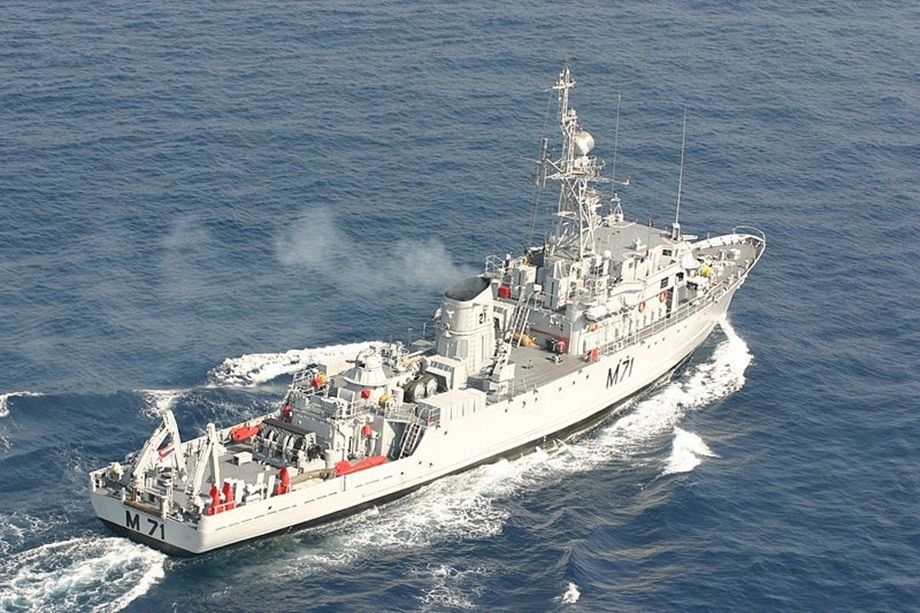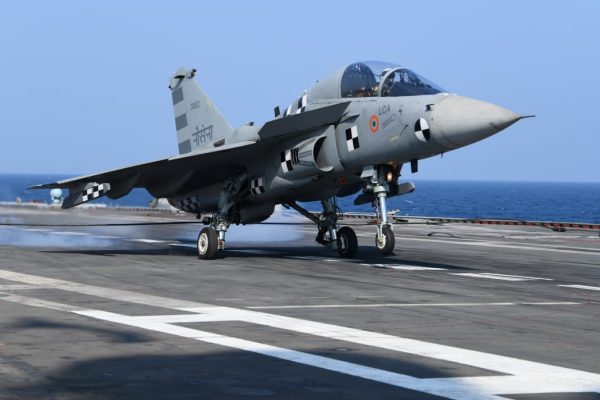India’s Most-Ambitious HAL Tejas Could Succumb To F-18 Super Hornet In Navy’s Carrier-Based Fighter Jet Deal?
As India’s first indigenous aircraft carrier INS Vikrant (IAC-1) commenced sea trials three weeks ago, the attention shifts to the possible carrier-based fighter to operate from its deck, since the Indian Navy rejected the Tejas LCA three years ago.
With the Vikrant being at least two years away from being fully operational even after commissioning, the problems cited by the Navy with the LCA Navy are unlikely to be resolved by the Aeronautical Development Agency (ADA) soon.
ADA under India’s Ministry of Defense is tasked with overseeing the development of the LCA program. In addition, US aerospace agency Boeing has aggressively pitched its F/A-18 Super Hornet Block III carrier-borne fighter to the Indian Navy.
Why Indian Navy Rejected Tejas
On December 2, 2016, then Chief of Naval Staff (CNS) Admiral Sunil Lanba
announced the Navy’s rejection of the “overweight” LCA Tejas.
The LCA Navy was adjudged to be unable to optimally operate from a carrier owing to being a single-engine aircraft when the service primarily wishes a powerful twin-engine jet, poor thrust-to-weight ratio to take off with a full fuel and arms payload, and issues with a weak under fuselage and landing gear.
The Navy, therefore, plans to operate Russian MiG-29K carrier-borne fighters, that currently fly from the INS Vikramaditya, 45 of which are said to be in service. Both the Tejas and the MiG-29K were originally slated to operate from the INS Vikrant.
The Navy was supposed to get around 50 LCA Tejas jets before it declared its dissatisfaction with the plane. The Tejas had witnessed several milestones, with the biggest on January 15 last year after it took off from the INS Vikramaditya.
Prior to that on January 11, 2020, it landed on the Vikramaditya with the arrested hook perfectly connecting with the arrester cables.
The Navy by then had initiated its Multi-Role Carrier Borne Fighter (MRCBF) program, for which French Dassault Aviation is again pitching the carrier-capable version of the Rafale, along with the Boeing F/A-18 Super Hornet Block III.
Boeing
even demonstrated the Hornet’s Short Takeoff But Arrested Recovery (STOBAR) compatibility for Indian carriers on December 21 last year, during which it took off a ski-jump from a Shore-Based Test Facility (SBTF) from the Naval Air Station at Patuxent River.
Earlier that month, the Indian Navy had said it
would combine its MRCBF program with the Indian Air Force’s (IAF) plan to procure 114 twin-engine fighters. Rafale and the Hornet are contenders for this IAF procurement too.
“We have the MiG-29K operating from the Vikramaditya and will operate from the Indigenous Aircraft Carrier (IAC-1). To replace them, we have taken up a case for the Multi-Role Carrier-Borne Fighters (MRCBF) which we are trying to do along with the IAF,” Navy chief Admiral Karambir Singh had said.
It was in 2017 that the Navy issued a Request For Information (RFI) to foreign players for 57 new fighters.
Twin-Engine TEDBF
Now, this is where it gets trickier. The Indian Navy has also announced working with the ADA and Defence Research and Development Organisation (DRDO) for the indigenous Twin-Engine Deck Based Fighter (TEDBF).
This commitment, along with budgetary constraints, has led the Navy to cut down the MRCBF procurement from 57 fighters to 36 units.
Even synergizing the program with the IAF would be challenging since the latter is open to even single-engine fighters whereas the Navy is particular about a twin-engine configuration for its MRCBF.
Veterans say the Tejas Navy should not be languishing in a hangar, awaiting trials, and India must not repeat its mistake with HF-24 Marut, in which prematurely abandoning a painstakingly developed jet, led to critical techno-industrial and aerospace manufacturing skills being lost.
“The design, production, and flight-testing of the LCA and LCA-Navy prototypes have generated invaluable experience, knowledge, and data which must not go waste. Its development must be pursued, and on successful completion of its ship-trials program, the LCA-Navy can be assigned a carrier-borne operational (or even training) role commensurate with the limitations imposed by its performance,”
says Admiral Arun Prakash (retired), former navy chief and naval combat aviator.
Air Marshal Philip Rajkumar (Retd)
stood up for the LCA program as a whole, countering the running criticism of it being the most delayed fighter program in the world and regretted that it was subject to “unwarranted criticism”.
Rajkumar, who flew the first 98 test flights of the Tejas as a test pilot, said the development timeline is wrongly taken from 1983 from when the project was merely approved by then PM Indira Gandhi.
“But the sum of Rs 2,188 crore was allotted only in 1993 and the first Technology Demonstrator (TD) flew in 2001.
The duration should therefore be calculated from either 1993 or 2001. Even the Eurofighter Typhoon, Dassault Rafale, and SAAB Gripen took around 30 years, despite these countries having prior experience in aircraft design,” Rajkumar said.
Is India's HAL Tejas jet drowning to F-18 Super Hornet and Rafale jets as Indian Navy refuses to induct Tejas aircraft for INS Vikrant?

eurasiantimes.com








